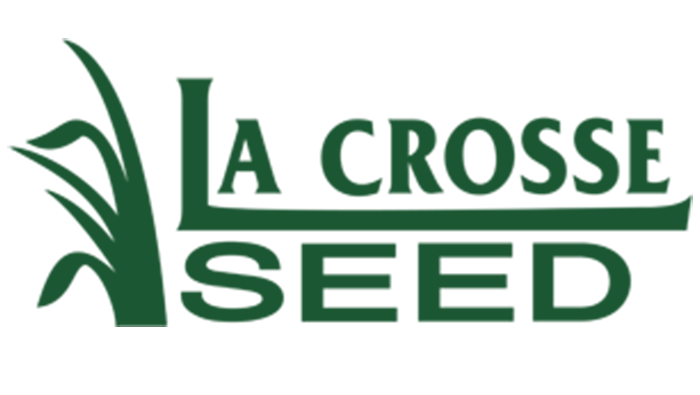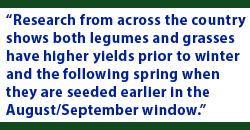
When’s the right time to seed forages in late summer?
 By La Crosse Seed
By La Crosse SeedAugust and September give many producers across the Midwest another window of opportunity to establish perennial forages. Not only does this time of year fit well into many cash crop rotations, like after small grain harvest, but seeding in late summer offers several other advantages compared to spring, such as:
- Less competition from winter and summer annual weeds.
- Warmer soils usually equate to quicker, more even germination and resulting establishment.
- For legumes, warmer and drier soils usually reduce the number of issues related to root rots and “damping-off” diseases compared to the cooler and wetter soils we see in spring.
- More time! Since growers aren’t as concerned with the field work associated with spring-planted cash crops, fewer short-cuts happen because forage plantings demand the same effort as any other crop.
A common concern is perceived lack of (consistent) moisture. With many forage seeds planted only 0.25 inches deep, sufficient soil moisture is critical. It makes sense to plant into some level of moisture or in advance of a rain event.
 The industry often refers to this as “fall seeding,” however, “late summer” is the more appropriate term, and it is more agronomic too. Research from across the country shows both legumes and grasses have higher yields prior to winter and the following spring when they are seeded earlier in the August/September window. Legumes especially need adequate time for proper contractile growth (alfalfa) and crown development (clover), which is critical to stave off winterkill.
The industry often refers to this as “fall seeding,” however, “late summer” is the more appropriate term, and it is more agronomic too. Research from across the country shows both legumes and grasses have higher yields prior to winter and the following spring when they are seeded earlier in the August/September window. Legumes especially need adequate time for proper contractile growth (alfalfa) and crown development (clover), which is critical to stave off winterkill.
Additional late summer forage seeding reminders:
- Plant/drill into a firm seed bed. Seed-to-soil contact is the name of the game with any seeding, and late summer isn’t any different. Once planting is done, you should be able to bounce a basketball on your seeded field. If that can’t be done, then the soil isn’t firm enough.
- Inoculate legumes. Nearly all alfalfa and red clover seeds come preinoculated, but not all legumes can be inoculated prior to seeding. Adding fresh inoculant makes sense because it is inexpensive and helps legumes establish properly.
- Consider recent herbicide applications that may threaten new forage seedings. Herbicide labels are the law and are meant to keep herbicide residues out of forage crops and subsequent animal tissue. The University of Wisconsin has great information on this.
- Lastly, concentrate on fertility. With alfalfa, soil pH must be above 6.5, and ideally closer to 7.0. For many forage grasses and other legumes, pH levels above 6.0 should be sufficient. General rules for phosphorus and potassium are:
- Add phosphorus to soil when levels are less than 25 ppm (50 pounds per acre).
- Add potassium when levels are below 125 ppm (250 pounds per acre).
Click here to view the optimal late summer seeding date charts.
| Category: |
Crop varieties Forage Foundations |

